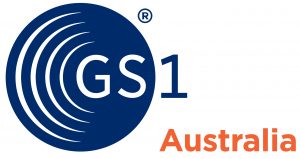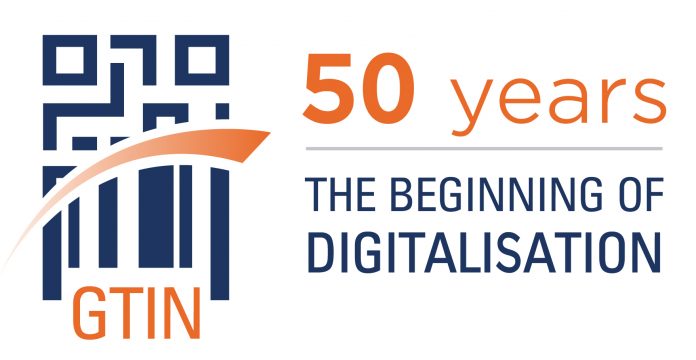 Maria Palazzolo
Maria Palazzolo
Encourages collaboration on next-generation barcodes.
The GTIN – the number behind the barcode – was developed 50 years ago and changed the world economy.
Fifty years ago, on March 31, 1971, leaders of the biggest names in trade came together and forever changed the world economy by developing the Global Trade Item Number (known as "GTIN"). This numerical code uniquely identifies each individual product and is the core of the barcode, the most important supply chain standard in history. Today the barcode is scanned more than six billion times a day and remains one of the most trusted symbols in the world.
“This is one of the great, untold stories in the history of modern business. Half a century ago, fierce competitors came together, putting their differences aside and doing global trading for the better with the development of the GTIN, which in turn led directly to the creation of the barcode. As we celebrate this remarkable milestone, we urge companies to work together again to meet the demands of the 21st century economy by rapidly deploying and implementing new technologies, including next-generation, data-rich barcodes, ”said Kathy Wengel , Executive Vice President & Chief Global Supply Chain Officer of Johnson & Johnson and Chairman of the GS1 Management Board.
The historic 1971 gathering took place in New York City and included executives from the then biggest names in the grocery, retail and consumer goods industries, including Heinz, General Mills, Kroger and Bristol Meyer. The executives agreed to create a system that can be used to uniquely identify each individual product, known as the Global Trade Item Number (GTIN). With great foresight, they believed that the GTIN could have positive effects beyond the grocery store – from warehouses to boardrooms – increasing the speed and efficiency of transactions and processes that could transform everything from supply chains to consumer experiences. At the meeting, they agreed to continue innovating together to create a system that benefits businesses and consumers alike. Decades later, the BBC called the resulting result one of the "50 Things The World Economy Did".
“From the visionary meeting of the founders of GS1 to the first scan at the Marsh Supermarket, the early 1970s were enormously exciting and challenging. I am honored to have been part of something that is so beneficial to our world that companies have come together and have come together for the common good. Now is the time for a new generation of industry leaders to come up with new forms of standards that could transform business over the next fifty years, ”says Tom Brady, engineer who designed and installed the scanner system used at Marsh's supermarket, which 1974 scanned the first barcode with GTIN.
Maria Palazzolo, Executive Director and CEO of GS1 Australia, says: “I firmly believe that the digitization of the GTIN is one of the most important milestones in the life of our organization.
“From linear EAN / UPC barcodes to 2D barcodes, the need to capture more than just product and price information is becoming more and more urgent and important. To do this successfully, we need to bring industry together to work together and harmonize. The journey into the future has really begun. "
GS1 standards like the barcode continue to help make the enormous complexity of the modern, global business flow fast, efficient and secure and to simplify all types of supply chain processes in almost every sector of the world. However, with consumers demanding more and better product information, it is time to take barcodes to the next level.
Developments towards next generation barcodes (like square barcodes like QR codes), which can contain much more information, should be used to provide consumers with trustworthy information and reshape global commerce for a new century. For example, their use can tell consumers whether a product contains allergens, whether it is organic, and information about its carbon footprint. Ultimately, this offers consumers a higher level of confidence and loyalty in relation to the products they have purchased.
"Our top priority is to guarantee our customers, our partners and our employees transparency, satisfaction, security and trust," says Özgur Tort, CEO of Migros Ticaret A.S. and co-chair of the Consumer Products Forum. “Like our predecessors half a century ago, we as business leaders now need to come together to develop standards that provide more useful and accurate product information. This type of collaboration and partnership can advance new technology in a way that benefits both businesses and consumers around the world. "
 About Maria Palazzolo
About Maria Palazzolo
Maria Palazzolo is the Executive Director and Chief Executive Officer of GS1 Australia. During her 38 year career at GS1 Australia, the past 18 years as CEO, she has led and shaped industry initiatives across Australia. Maria has successfully positioned the organization as a change agent in the supply chain and e-commerce landscape. With the expansion of services, an innovative approach and a strong customer focus, GS1 is a preferred partner for many Australian companies.
About GS1 Australia
GS1 is a neutral, not-for-profit organization that develops and maintains the most widely used global standards for efficient business communication. We are best known for the barcode, which the BBC calls one of the "50 Things The World Economy Did". GS1 standards and services improve the efficiency, security and visibility of supply chains across physical and digital channels in 25 sectors. With local member organizations in 114 countries, 2 million user companies, and 6 billion transactions per day, GS1 standards create a common language that supports systems and processes around the world.
For more information, visit the GS1 Australia website or follow us on LinkedIn, Twitter and our YouTube channel.




